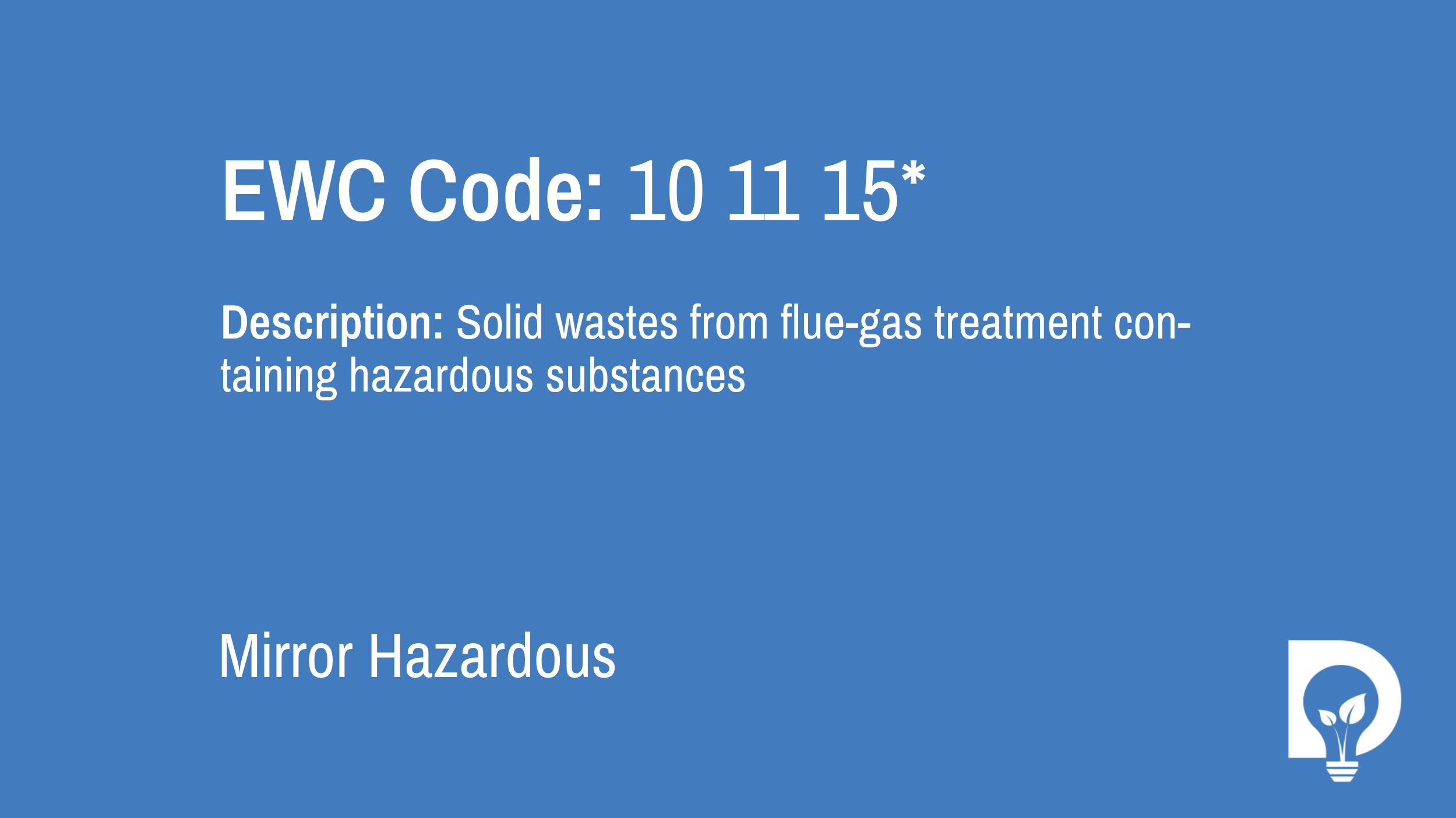EWC Code 10 11 15*
European Waste Catalogue (EWC) Code 10 11 15* describes waste that as solid wastes from flue-gas treatment containing hazardous substances and is classed as a Mirror Hazardous code.
EWC Code
10 11 15*Description
solid wastes from flue-gas treatment containing hazardous substancesEntry Type
Mirror HazardousSome wastes are not automatically hazardous or non-hazardous - they are called mirror entry wastes. These wastes have a hazardous waste entry (or entries) marked with an asterisk (*), and an alternative non-hazardous waste entry (or entries) not marked with an asterisk.
An EWC Code is a six-digit code used to identify waste as listed in the European Waste Catalogue. It is formatted as three pairs of numbers, for example 12 34 56. It identifies and classifies waste into categories according to how these wastes have been produced. It adequately describes the waste being transported, handled or treated. It can also be referred as a LoW Code (List of Waste Code). Read "What is an EWC Code?" from more information.
